What will it cost?
By far, the question that is asked the most when thinking about building a custom home is, "What will it cost?"
It is the same question whether the project is a renovation, a new deck or a multi-million dollar estate.
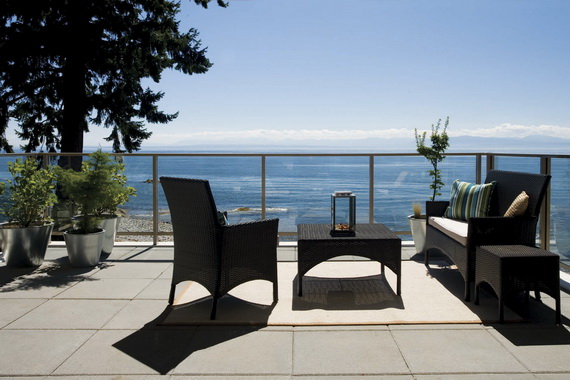 Beach Avenue
Beach Avenue
It is a really good question. However, before it can be realistically answered, it requires you to clearly define your expectations and that means answering a number of other questions first.
"How much will it cost?" is really another way of asking, "Can I afford what I think I want?" The thing is that what you think you want can change pretty dramatically depending on a whole host of other factors.
The real question is: "What is the absolute most that you are willing to spend and what can you realistically expect to get for that?". This number is your "project budget".
When trying to figure out how much house you can build, you will hear numbers like 200, 300 or 350 dollars per square foot. These numbers are very confusing but can be loosely translated into low, medium or average quality finishes and there is no limit on how high this number can be.
The higher the per square foot number, the fancier and more comfortable your home can be, and the more advanced the mechanical systems can be.
The reality is that the cost of building an average quality home on a average site on the Sunshine Coast is $350 per square foot not including taxes.
This cost per square foot continues to rise, in fact the average cost of construction has risen by 20 to 30% every year for the past 3 years. This means that it costs almost 100% more to build a home this year than it did 3 years ago!
This is hard to believe however, there are many factors that influence these costs. Devestating forest fires and the rising demand for lumber has driven the costs higher. Trade tariffs placed on drywall production have driven the cost 30% higher.
The demands for skilled labour across many communities have seen dramatic increases. The fluctuating Canadian dollar have seen exchange rates as high a 27%, which drives up the cost of all items coming from the US and fluctuating oil prices have increased the cost of transporation and delivery charges for everything.
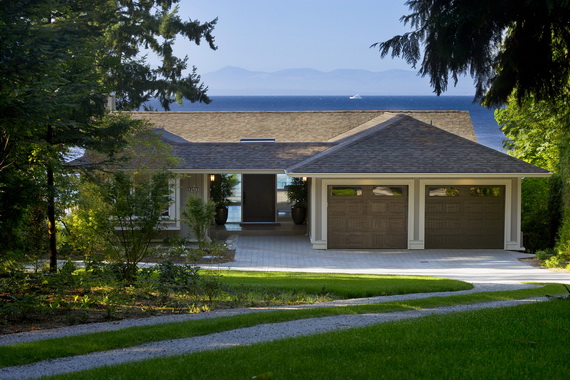 Beach Avenue
Beach Avenue
Most importantly, the above numbers refer only to your "construction budget" and include only the direct costs of all the materials and labour to actually construct your new home or renovation, including the general contractor's fee, but not including taxes or any other costs which make up the "total project budget".
It is these other, harder to define costs of the project, that are sometimes forgotten when calculating your overall project budget and the resulting overall per square foot cost.
These other costs include fees for professional consultants like architects and home designers, structural, mechanical and geotechnical engineers, real estate agents and interior designers, as well as other professionals who may be required, municipal permits, landscaping and hard surfaces, site work and special features like roads, paths, gardens, pools and patios.
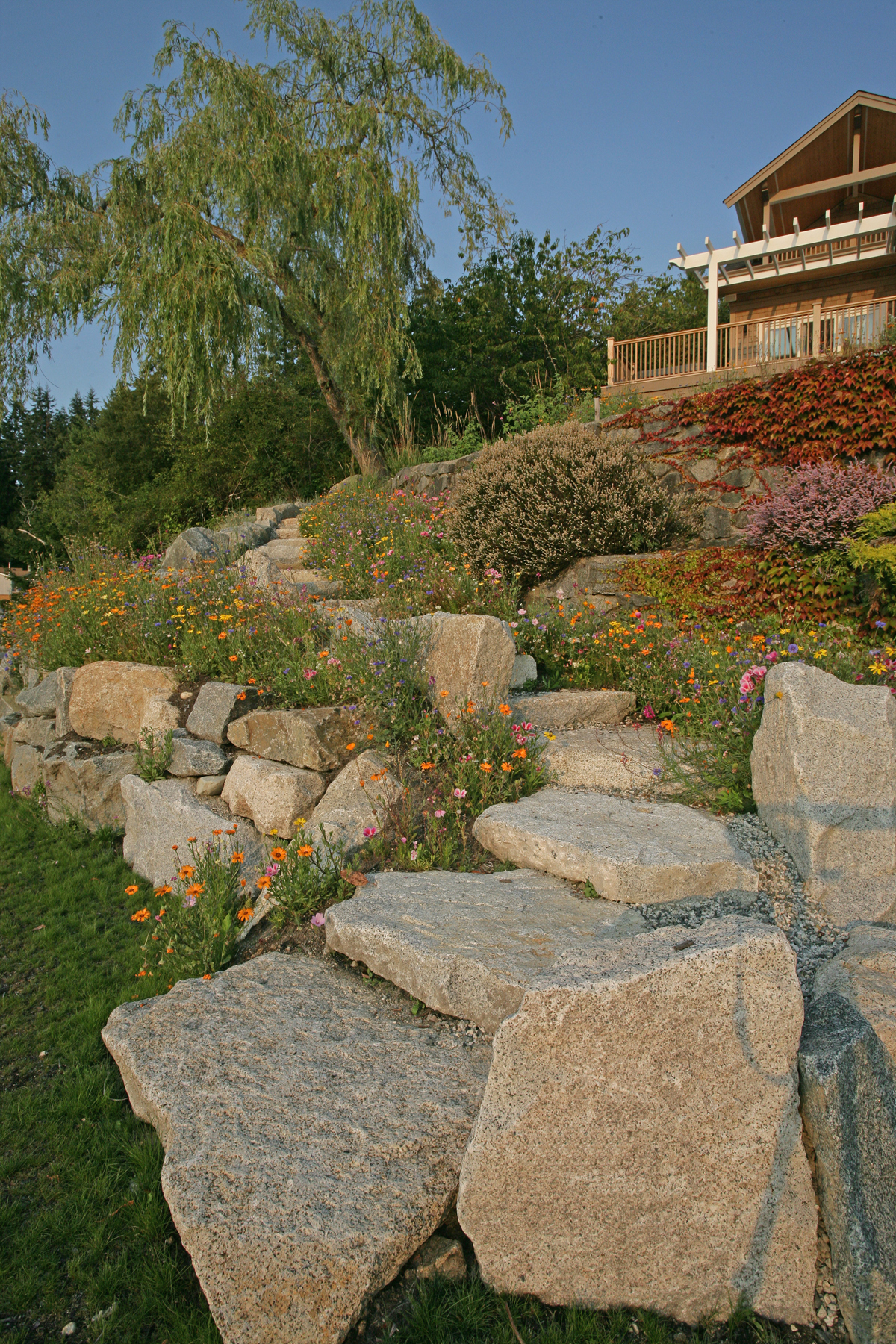 Whale House Patio and Stair to Water
Whale House Patio and Stair to Water
Don't forget bank fees and financing, shipping, storage, septic fields, wells, blasting, roadwork, site lighting, drainage, parking and driveways, landscaping and a host of other expenses that can add up faster than you can say, "What happened to my bank account?"
The reality is that the costs over and above your direct construction costs can easily be 20% of your overall project budget and go up from there depending on the complexities of the site and the efficiency of your design.
This means that out of every $100,000 you spend on direct construction costs you can pay $20,000 or more in other costs.
The more complicated the site, and the less efficient the structure and floor planning are, the more these "soft costs" will increase. In some cases these costs can actually be more than the total construction budget.
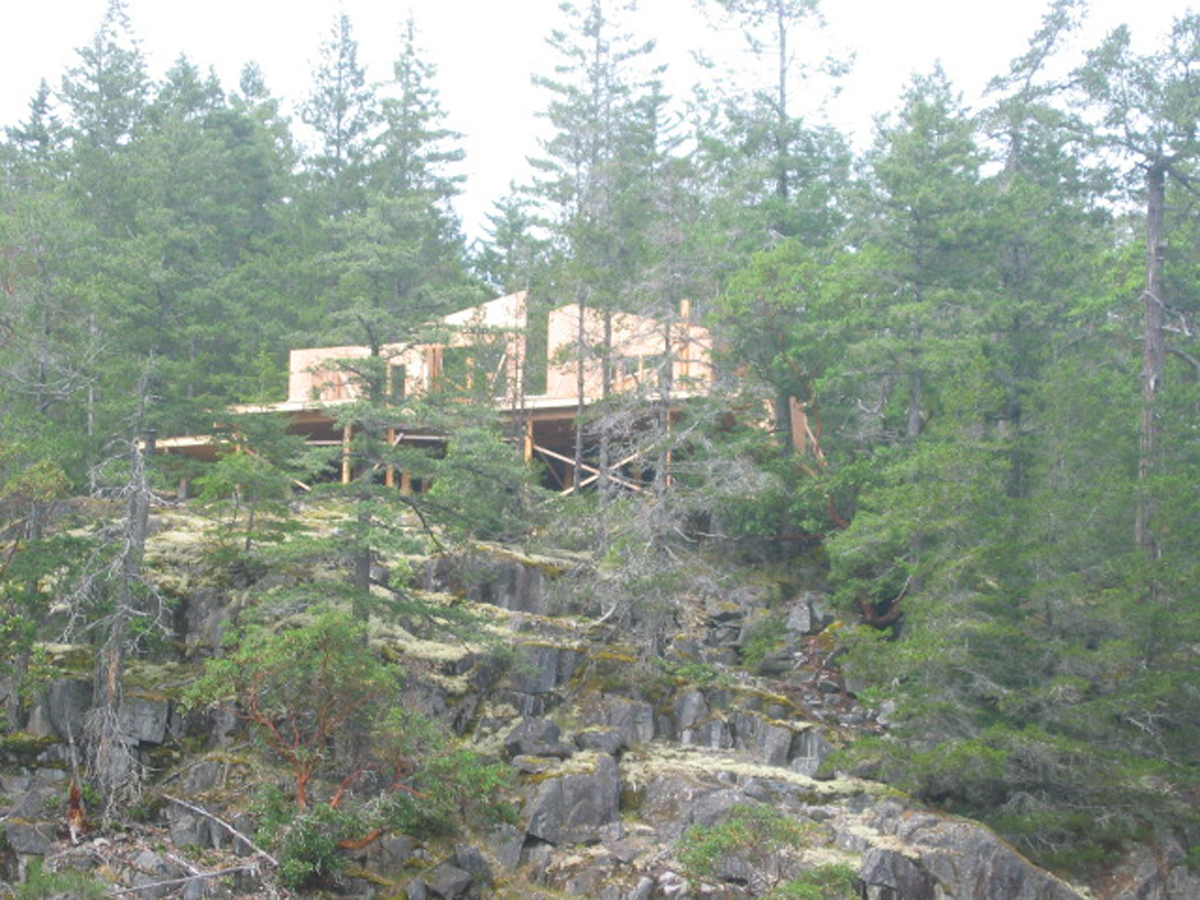
Rock Bottom - Off the grid living on a remote island
This sounds like common sense but it is amazing how often people try to force their dream home onto a site with little understanding of the structural consequences or consideration of how the site will impact their design and the costs of building their dream.
Most people have been thinking about their new home for quite some time before they actually buy a site and start their project in earnest. They have pretty clear ideas about what they want and they have sometimes even sketched up plans and collected a vast binder of pictures describing exactly what they are dreaming about.
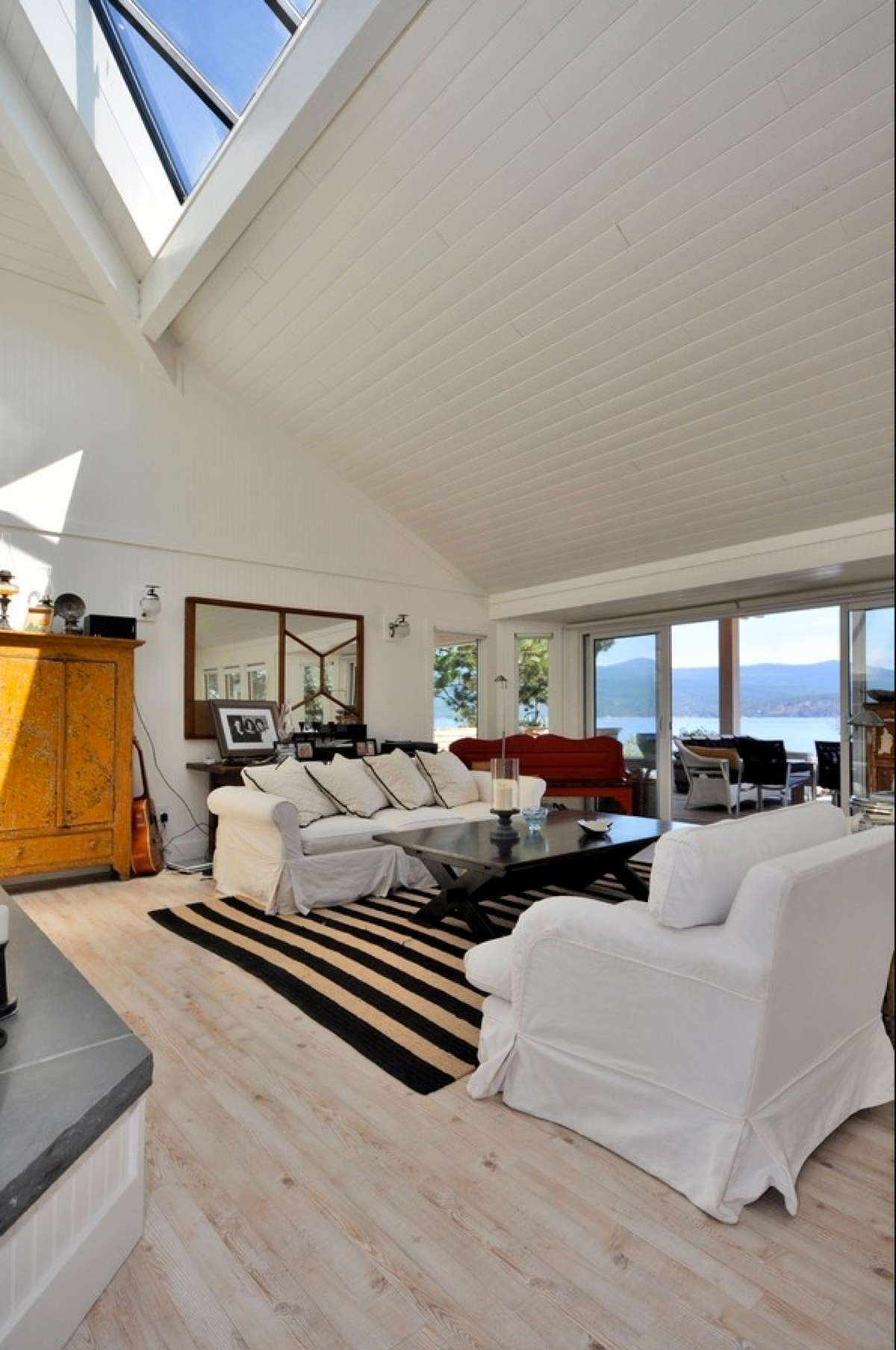
Island Retreat
All this time invested makes it hard for them to let anything change. However, the thing that will blow your budget faster than anything is when you try to force your dream home onto a site where it just does not work.
If you can bring your dreams to the table and at the same time be open to how other factors may change them, you may be surprised at some of the choices you make. Your home may end up being something quite different than your expectations, but it will be far beyond your wildest dreams and still within your project budget.
The truth is that your dreams are only one of many considerations that will determine where your money will be spent. The design choices you make based on these other considerations will largely determine how much you have to actually put into your home.
The first reality check is the applicable zoning bylaws that determine how big your home can be, how high it can be, where it can be on your site and whether or not there can be any other associated buildings like a coach house, greenhouse, garage, sheds, in-law suite, second residence, boathouse, parking, driveways, fences and retaining walls.
There may also be a building scheme for the site that can require you to use specific materials, landscaping, lighting and even determine the slope of your roof.
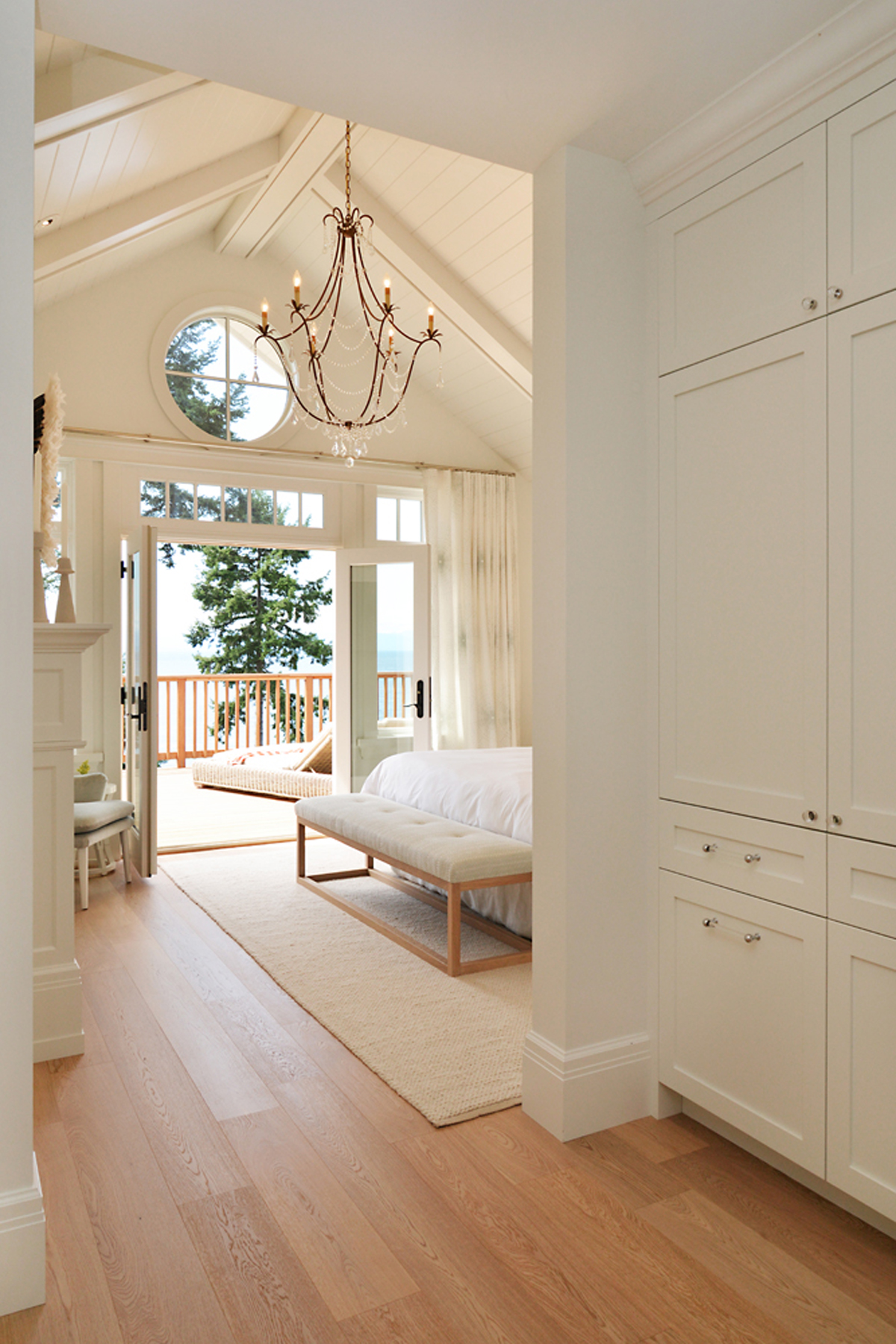
Seaglass Cottage Master Bedroom
Then there is the fun stuff. What do you want to build? When will it be started and when do you want it to be finished? Are you going to build through the winter? What kind of building will it be: modern or cottage, post and beam or framed, prefab or concrete and glass?
What is the site like: is it flat or steep, wet or dry, rocky or sandy, tree covered or cleared, sunny or shady? Is there a view, a road, access to public power, water and sewage treatment? How will your home sit on the site?
What is the access like? Can we get trucks in and out of the site easily? Is it on an island and is there power available to even begin construction? Are there any special requirements like patios, decks, large overhangs, steep roofs, flat roofs or green roofs, or a pool, gardens or a greenhouse?
How "green" do you want it to be? Is there solar power, geothermal or wind energy, green roofs, sustainable materials, water collection or recycling? Is it on an island or remote location?
What are the mechanical systems? Is there forced air heating, air conditioning, humidification and heat recovery? Is there in-floor radiant heating; is it gas or electric? Is there a hot water tank or an on-demand system? Is there a thermal mass fireplace, wood heat or gas?
What about the structure? Is there a concrete foundation or is it slab on grade? Is there a crawl space or is it built on piers, columns and beams? Are there retaining walls, piles, grade beams or rock work?
Are there decks? Are they drip decks or waterproof? Are they metal, wood, stone, concrete or tile? Are they covered, heated or screened? Is there a barbecue or outdoor kitchen? How about a fireplace?
What do you see when you look out the windows or stand on the deck? What rooms have sun in the morning and where is a shady spot to escape from the hot summer sun or protect you from the spring rains? Where do your guests go and how does it all work for you and your family?
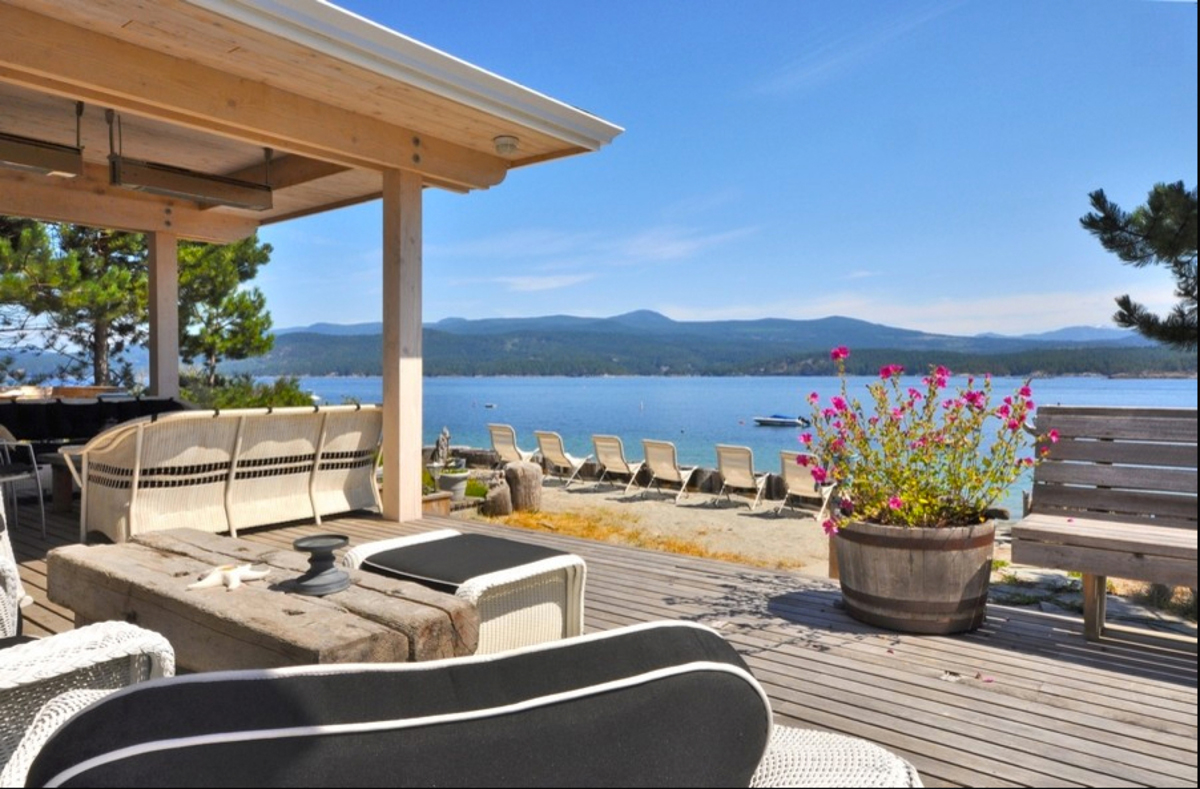
Island Retreat
I know that these questions can be overwhelming so here are some general rules of thumb to help you do a preliminary construction budget on a napkin for building a new home on the Sunshine Coast.
Let's say the maximum amount you are willing to spend, your total project budget, is $900,000. Take 10% of it and put it away as a contingency for unexpected costs or for upgrading the fixtures, finishes and mechanical systems. This leaves $810,000.
Now take away the taxes. There is sales tax and GST on many of the materials and labour. The taxes average out to about 8% of the total project cost which, in this example, comes out to $72,000 which leaves $738,000.
Now take away another 20% ($180,000) for all the other costs leaving about $558,000 as your "construction budget".
If you now pick an average range of finishes at $350 per square foot, you can build a home of around 1600 square feet.
Now take your project budget of $900,000 and divide it by 1600 square feet which will give you your actual cost per square foot of about $560.
Every project is unique and every site has its unique features and requirements, restrictions and opportunities. The point is that what you really want is to put as much of your budget as possible into the finishes and details of your home because that translates directly into how comfortable your home will be and what its perceived value will be.
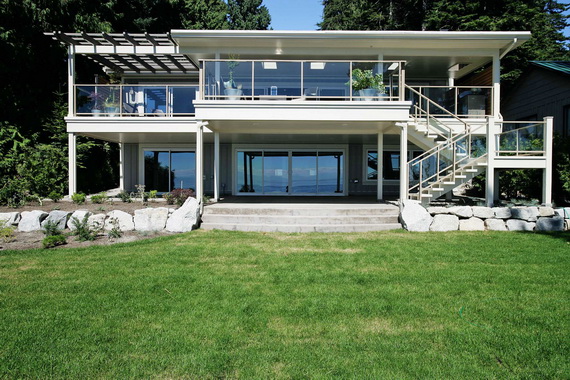
Beach Avenue
This means that if you carefully consider the site and let the design of your home become what it wants to be, rather than forcing a square peg into a round hole, you can save a huge portion of your overall budget to spend where it really matters.
This is where professionals like architects, engineers, experienced builders, interior designers, landscapers and real estate agents really earn their fees and save you money rather than cost you money.
Getting your team together early in the design phase of your project will translate directly into getting you the most house for your money and help you to figure out what the real cost of building your dream will be.